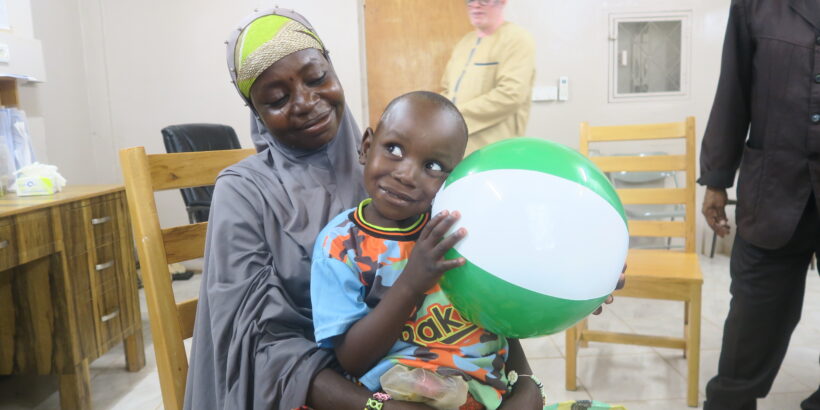Typhoid fever is a serious enteric infection that can be cured through timely and accurate diagnosis and appropriate antibiotic treatment. However, this process is often difficult in low- and middle-income countries due to delays in access to healthcare and the lack of laboratory equipment for blood cultures – the standard test to diagnose typhoid. Without reliable or accessible diagnostics, clinicians often diagnose typhoid based on symptoms such as fever and fatigue. These symptoms are common to many diseases, which can lead to misdiagnosis, treatment delays, and inappropriate antibiotic use, which can promote drug resistance.
If typhoid is left untreated, it can become life-threatening due to serious late complications, including intestinal bleeding or typhoid intestinal perforation (TIP). TIP results from typhoidal bacteria and the immune response to them eroding the walls of the intestines, leading to the formation of distinct holes, called perforations. When this happens, emergency surgery is required. In areas with limited medical resources, many patients with complications are unable to access the necessary medical facilities for surgery.
TIP morbidity and mortality

A recent systematic review analyzed articles published between January 1980 and January 30, 2024, that reported mortality, morbidity, or complications in patients who underwent TIP surgery. The analysis includes 46 articles: 31 from the African region, 12 from the Asian region, and 3 from the Americas. The review reveals that disability and death associated with TIP remain substantial in Africa and Asia where typhoid is endemic.
Results from this analysis estimate that overall, 16% of TIP patients die, with a higher percentage in Africa (21%) compared to Asia (6%). While Asia has seen a decline in deaths from TIP over the study time period, it remains unchanged in Africa. Overall, patients who had multiple perforations exhibited worse outcomes than those with a single perforation. Of patients with a single perforation, 83 percent survived after surgery, compared to 63 percent of those with multiple perforations. Additionally, children, who are most at risk for contracting typhoid in settings with high typhoid incidence, suffer high mortality from TIP. The data showed that nearly 20% of the children who underwent TIP surgery died.
For patients who survive TIP, most have a long and challenging recovery. More than half of TIP patients experience postoperative complications, including surgical site infections, pneumonia, and re-perforation. Patients typically require lengthy hospital stays—on average 7 days in Asia and 14 days in Africa. Beyond the physical recovery, this places a heavy financial burden on families. Caregivers might be forced to miss work to care for their children and hospital bills can be substantial. A recent review found that typhoid illness costs are often catastrophic for families. Additionally, pediatric TIP patients miss school due to the long hospital stay required for recovery, which has a long-lasting impact on their education.
Preventing typhoid and TIP
This review’s findings show the high morbidity and mortality that arise from untreated typhoid. Data on TIP patients can serve as a valuable indicator of how severe typhoid is at present, as can blood culture data. This information can enable policymakers to make informed decisions about their typhoid prevention strategies, including the introduction of typhoid conjugate vaccines (TCVs), which are safe, affordable, and 79-85% effective in children younger than 15 years with a single dose.
By preventing typhoid, we prevent the disease’s progression that leads to TIP. Vaccination with TCVs as well as water, sanitation, and hygiene improvements are proven tools to reduce typhoid incidence. For patients who do get TIP, improved accessibility to high-quality surgical care, as well as pre- and post-operative care to mitigate morbidity and mortality, are urgently needed.
Cover Photo: A TIP patient during a follow-up appointment in Niger. Credit: CVD.



